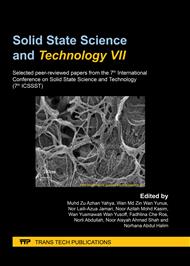p.270
p.276
p.283
p.293
p.300
p.305
p.312
p.320
p.327
Enhancement of Heat Ageing Properties of Epoxidised Natural Rubber Blend
Abstract:
In recent years, automotive hose and belt specifications have changed, requiring longer product life in terms of swelling, wear and heat ageing. Diene-based rubbers, such as natural rubber (NR) and styrene-butadiene rubber (SBR), have been widely used in diverse industries. However, some apparent defects such as limited ageing resistance and large compression set, have been demonstrated in some rubbers cured by sulfur or peroxides. In the making of general and industrial rubber goods, short production and sufficient scorch time is crucial especially by using an injection moulding. In this work, blend of Epoxidised Natural Rubber (ENR 25) and Butadiene was developed with two types of curing systems namely Conventional and Efficient Vulcanisation system. The aim of the study is to produce a satisfactory heat resistance rubber compounds and adequate process safety for rubber manufacturing. Results showed that curing system applied significantly affected thermal stability property of the compounds. Modulus and hardness of the blends appeared to decrease progressively with ageing. However, greater thermal stability especially ageing at 100°C for 200h was observed with compound containing efficient curing system compared to conventional curing system which corresponded to the cross link density attributed by the torque value and dynamic mechanical analysis. The results on stiffness however was effected by the curing system applied. The influence of cure temperature on the chemical crosslink density on both cure systems are being investigated. The network results will be correlated with the technical properties.
Info:
Periodical:
Pages:
300-304
Citation:
Online since:
May 2021
Authors:
Keywords:
Price:
Сopyright:
© 2021 Trans Tech Publications Ltd. All Rights Reserved
Share:
Citation:


